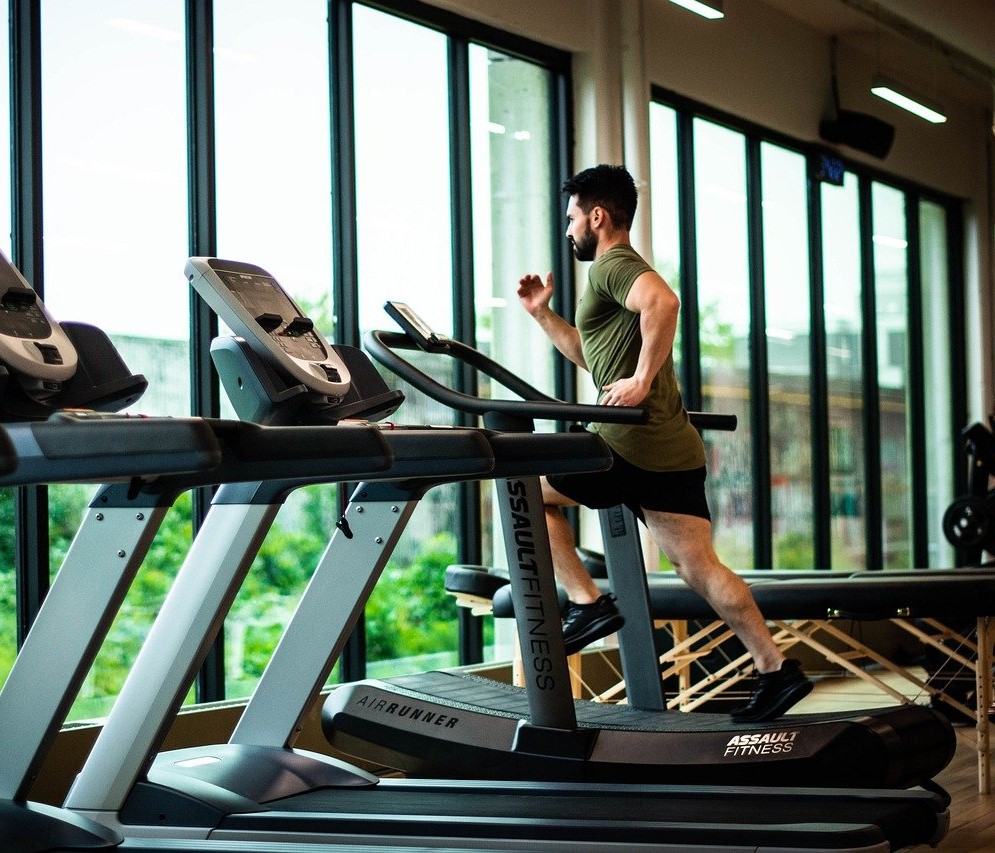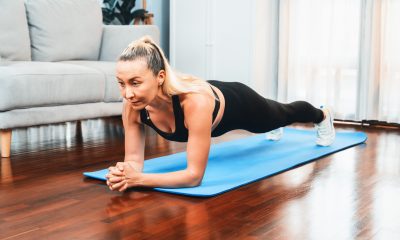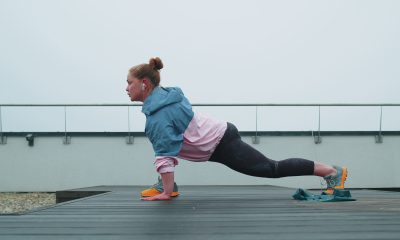Traınıng Tıps
Common Mistakes to Avoid When Using a Treadmill: Tips for Safe and Effective Workouts

Treadmills are among the most popular fitness equipment choices, offering convenience and versatility for indoor cardio workouts. While using a treadmill seems straightforward, many individuals unknowingly make mistakes that compromise safety and hinder progress. To help you maximize the benefits of your treadmill sessions, here are key tips to avoid common pitfalls and optimize your workout experience.
- Skipping Warm-up and Cool-down
One of the most common errors people make is neglecting the warm-up and cool-down phases of their workout. Skipping these crucial steps can increase the risk of injury and delay recovery. Before starting your treadmill session, dedicate 5-10 minutes to a dynamic warm-up. This should include movements that gradually increase your heart rate and warm up major muscle groups, such as leg swings, high knees, or light jogging. After your workout, spend another 5-10 minutes on static stretches to improve flexibility and reduce muscle tension.
- Holding onto the Handrails
Many individuals rely on the treadmill handrails for balance and support, especially at higher speeds or inclines. However, gripping the handrails can alter your posture and stride mechanics, leading to poor running or walking form and potential injuries. To maintain proper posture, let your arms swing naturally alongside your body. If you feel the need for additional support, lightly touch the handrails with your fingertips instead of gripping them tightly.
- Setting the Incline or Speed Too High
Another common mistake is setting the treadmill incline or speed too high, especially when starting a workout or returning from injury. This can lead to premature fatigue, discomfort, and even injury due to overexertion. Begin your workout with a flat or slight incline setting and a moderate pace that allows you to comfortably maintain proper form and controlled breathing throughout. As your fitness improves, gradually increase the incline or speed in small increments to challenge yourself safely.
- Staring at Your Feet or Console
It’s natural to want to monitor your progress by watching your feet or the treadmill console, but this habit can negatively impact your posture, balance, and overall workout experience. Constantly looking down can cause you to hunch forward, leading to neck and shoulder strain. Instead, maintain a forward gaze with your head up and focus on a point in front of you to keep your body aligned and stable. To keep your mind engaged without staring down, consider listening to music, podcasts, or watching videos during your workout.
- Overestimating Calorie Burn
Many treadmill users rely heavily on the machine’s calorie counters to gauge their workout effectiveness and calorie expenditure. However, these estimates can be inaccurate and vary widely based on factors such as age, weight, fitness level, and individual metabolism. Instead of fixating on calorie numbers, focus on the quality and consistency of your workouts. A well-rounded fitness routine that includes cardio, strength training, and proper nutrition will contribute more effectively to your overall health and fitness goals than simply chasing calorie burn.
- Neglecting Interval Training
Failure to incorporate interval training into your treadmill routine is a missed opportunity to maximize calorie burn, improve cardiovascular fitness, and break through fitness plateaus. Interval training involves alternating between periods of higher intensity (e.g., sprinting) and lower intensity (e.g., walking or jogging). This method not only increases calorie burn during the workout but also boosts metabolism and enhances endurance over time. Start with short intervals and gradually increase the intensity and duration as your fitness level improves.
- Not Seeking Professional Guidance
Embarking on a treadmill workout regimen without proper guidance or instruction can limit your progress and increase the risk of injury. A certified personal trainer or fitness instructor can provide personalized guidance, support, and accountability tailored to your individual fitness goals and needs. Platforms like Trainerlist connect you with qualified trainers specializing in cardio workouts, ensuring you receive expert advice on maximizing your treadmill workouts safely and effectively.
By avoiding these common mistakes and incorporating these tips into your treadmill workouts, you can optimize your fitness routine and achieve your goals efficiently. Remember, consistency and proper technique are key to long-term success and overall fitness improvement.

Traınıng Tıps
Tips for Improving Sports Performance: Elevate Your Game with Trainerlist

Improving sports performance requires a holistic approach that integrates physical training, mental conditioning, proper nutrition, and effective recovery strategies. Whether you aim to excel on the field, court, or track, enhancing your athletic abilities demands focused effort across multiple dimensions of preparation. Below, we explore comprehensive strategies to optimize your performance and how Trainerlist can be instrumental in achieving your athletic goals.
1. Set Clear and Measurable Goals
Setting clear, specific, and measurable goals is paramount to advancing in sports. Whether you seek to enhance speed, strength, agility, endurance, or technical skills, establishing precise objectives provides direction and motivation throughout your training journey. Well-defined goals also enable you to monitor progress systematically and adjust strategies as needed.
2. Consistent and Varied Training Regimen
Consistency in training is foundational for continual improvement in sports. Develop a structured training program that encompasses a diverse range of exercises targeting various aspects of fitness. Incorporate workouts for strength, power, speed, agility, flexibility, and sport-specific skills to ensure comprehensive development and preparedness for competitive scenarios.
3. Tailor Training to Your Sport’s Demands
Tailoring your training regimen to align with the specific demands of your sport is essential for optimizing performance. Integrate drills, exercises, and simulations that replicate the movements, skills, and intensity encountered during actual competition. This sport-specific approach not only enhances technical proficiency but also fosters mental and physical readiness for the challenges inherent in your sport.
4. Enhance Mental Toughness and Visualization Techniques
Mental preparation is a cornerstone of sports performance. Cultivate mental toughness through techniques such as visualization, goal-setting, and positive self-talk. Visualizing successful outcomes and mentally rehearsing strategies can bolster confidence, sharpen focus, and fortify resilience, enabling you to perform at your peak during critical moments.
5. Optimize Nutrition and Hydration Strategies
Fuel your body with a balanced diet that supports optimal performance and recovery. Emphasize nutrient-dense foods including lean proteins, complex carbohydrates, healthy fats, vitamins, and minerals. Customize your nutrition plan to meet the specific demands of your training and competition schedule. Adequate hydration is equally vital—maintain optimal fluid intake to sustain energy levels and prevent dehydration during rigorous physical activity.
6. Prioritize Rest, Recovery, and Sleep
Rest and recovery are indispensable components of an athlete’s regimen. Allocate sufficient time for recovery between training sessions to facilitate muscle repair and growth. Quality sleep is essential for physical and mental rejuvenation, enhancing cognitive function, mood regulation, and overall well-being. Incorporate relaxation techniques and stress management strategies to optimize recovery and mitigate the risk of overtraining.
7. Seek Professional Guidance and Support
Consulting with certified coaches, trainers, and sports specialists who specialize in your sport or athletic discipline can provide invaluable insights and support. Trainerlist offers a comprehensive platform connecting athletes with experienced professionals who can deliver personalized training programs, expert advice, and ongoing support tailored to your unique needs. Whether you’re a novice athlete refining foundational skills or an elite competitor striving for peak performance, Trainerlist facilitates access to the resources and expertise necessary to achieve your athletic aspirations.
Leveraging Trainerlist for Enhanced Performance
Trainerlist serves as a pivotal resource for athletes of all levels seeking to elevate their performance. By leveraging Trainerlist’s extensive network of seasoned coaches and trainers, you gain access to tailored guidance, structured training programs, and specialized support designed to maximize your potential. Whether you’re pursuing personal growth or aiming for competitive success, Trainerlist empowers you to excel in your sport and embark on a transformative athletic journey.
In conclusion, enhancing sports performance requires dedication, discipline, and a strategic approach encompassing physical training, mental preparation, nutrition, and recovery. By implementing these comprehensive strategies and leveraging Trainerlist’s resources, you can optimize your performance, achieve your athletic goals, and elevate your game to new heights.
Traınıng Tıps
Maximize Your Results with One-Hour Gym Workouts

A one-hour gym workout session provides ample opportunity to target various muscle groups, enhance cardiovascular fitness, and improve overall strength and endurance. This article outlines a comprehensive one-hour gym workout routine designed to optimize your time and achieve optimal results.
Warm-Up (5-10 minutes)
Begin your workout with a thorough warm-up to elevate your heart rate and prepare your muscles for exercise:
- Light Cardio: Start with 5-10 minutes of jogging on the treadmill, cycling, or using the elliptical machine. This helps gradually increase your heart rate and warm up your entire body.
- Dynamic Stretches: Incorporate dynamic stretches and mobility exercises to improve flexibility and range of motion. Focus on movements like arm circles, leg swings, torso twists, hip rotations, and shoulder rolls to activate major muscle groups and prevent injury.
Strength Training (30-35 minutes)
The core of your workout focuses on building muscle strength and endurance:
- Compound Exercises: Include compound movements such as squats, deadlifts, bench presses, rows, and overhead presses. These exercises engage multiple muscle groups simultaneously, maximizing efficiency and promoting muscle growth.
- Set and Rep Range: Perform 3-4 sets of 8-12 repetitions per exercise. Choose weights that challenge your muscles while maintaining proper form and technique.
- Supersets and Circuit Training: Alternate between upper body and lower body exercises to optimize rest periods. Pair exercises like squats with push-ups or lunges with rows to keep your heart rate elevated and enhance calorie burn.
Cardiovascular Exercise (15-20 minutes)
Focus on improving cardiovascular health and endurance:
- Cardio Options: Select a cardio machine or activity that suits your preference, such as treadmill running, cycling, rowing, or stair climbing.
- Duration and Intensity: Aim for 15-20 minutes of moderate to high-intensity cardio. Maintain a steady pace to challenge your cardiovascular system effectively.
- Interval Training: Incorporate intervals of high intensity (e.g., sprinting) followed by periods of lower intensity (e.g., walking or jogging) to boost calorie expenditure and enhance cardiovascular fitness efficiently.
Cool Down and Stretching (5-10 minutes)
Conclude your workout with a cooldown to facilitate recovery and reduce muscle tension:
- Low-Intensity Cardio: Finish with 5-10 minutes of low-intensity cardio such as walking or gentle cycling to gradually lower your heart rate.
- Static Stretches: Perform static stretches targeting major muscle groups to improve flexibility and prevent injury. Hold each stretch for 15-30 seconds, focusing on areas like calves, hamstrings, quadriceps, hips, chest, back, and shoulders.
Nutrition Tips for Optimal Performance
Proper nutrition plays a crucial role in supporting your workout efforts and enhancing overall fitness. Consider incorporating these nutrition tips into your routine:
- Pre-Workout Fuel: Consume a balanced meal or snack containing carbohydrates and protein 1-2 hours before your workout to provide energy and support muscle recovery.
- Post-Workout Recovery: After exercise, refuel with a combination of protein and carbohydrates to replenish glycogen stores and promote muscle repair and growth.
- Hydration: Stay hydrated before, during, and after your workout to maintain optimal performance and prevent dehydration.
- Healthy Choices: Opt for nutrient-dense foods such as fruits, vegetables, lean proteins, whole grains, and healthy fats to support overall health and fitness goals.
Tips for Success
- Listen to Your Body: Pay attention to how your body responds during the workout. Adjust intensity or exercises as needed to avoid overexertion.
- Stay Consistent: Commit to regular one-hour gym workouts to achieve long-term fitness goals and monitor progress.
- Focus on Technique: Ensure proper form and technique throughout exercises to minimize injury risk and maximize effectiveness.
Conclusion
By following this structured one-hour gym workout routine and integrating proper nutrition, you can efficiently target muscle groups, improve cardiovascular fitness, and achieve your fitness goals. Whether you’re a beginner or seasoned gym-goer, consistency and a balanced approach will help you maximize your gym time and maintain long-term fitness success.
Traınıng Tıps
Personal Trainer Prices and Finding Affordable Private Trainers on Trainerlist

Hiring a personal trainer is a significant decision that can greatly impact your health and fitness journey. It’s essential to understand the costs involved and find a trainer who meets your budgetary needs. This guide delves into the intricacies of personal trainer pricing and provides actionable tips for finding affordable private trainers through Trainerlist. By grasping these details, you can make informed choices that propel your fitness goals without financial strain.
Understanding Personal Trainer Prices
The cost of personal training sessions varies based on several factors, including location, trainer experience, qualifications, specialization, and session duration. Typically, rates range from $50 to $150 per hour. Key factors influencing pricing include:
- Location: Prices tend to be higher in urban areas or premium fitness facilities compared to suburban or rural locations.
- Experience and Qualifications: Trainers with advanced certifications, extensive experience, or specialized skills generally command higher fees.
- Session Duration: Longer sessions or packages often offer discounted rates per session compared to individual bookings.
- Training Format: Group sessions or online coaching can be more cost-effective alternatives to one-on-one sessions.
Factors Affecting Personal Trainer Prices
- Location: Urban centers and affluent neighborhoods typically have higher personal training rates than less densely populated or rural areas.
- Experience and Qualifications: Trainers with extensive credentials, specialized expertise, or a proven track record of client success generally charge higher fees.
- Session Duration: Longer sessions or bundled packages often provide more value per session compared to single-session bookings.
- Training Format: Group sessions or virtual coaching can offer more economical options for individuals on a budget.
Finding Affordable Trainers on Trainerlist
Trainerlist serves as a valuable resource for connecting with certified personal trainers in your local area. Here’s a structured approach to finding an affordable trainer without compromising on quality:
- Browse Trainer Profiles
Explore Trainerlist’s extensive database of personal trainers. Evaluate their credentials, experience, specialties, and pricing structures. Look for introductory offers, package deals, or discounts for purchasing multiple sessions upfront.
- Utilize Price Filters
Take advantage of Trainerlist’s search filters to narrow down your options based on your financial considerations. Compare hourly rates, session packages, or subscription plans that align with your budget.
- Review Client Testimonials
Read reviews and testimonials from clients to gauge the effectiveness and quality of each trainer’s services. Look for feedback that resonates with your fitness goals and expectations.
- Contact Trainers Directly
Reach out to selected trainers to inquire about their rates, availability, and any ongoing promotions. Many trainers are open to discussing customized training plans or adjusting session lengths to accommodate your budget and fitness objectives.
Considering Online Training Options
Online personal training and virtual coaching sessions can offer more cost-effective alternatives to traditional in-person training. Explore Trainerlist’s virtual training options to collaborate with qualified trainers remotely, potentially at lower costs per session.
Negotiation and Customization
Don’t hesitate to negotiate with trainers or inquire about personalized training packages that fit your financial constraints. Many trainers are willing to adjust session frequency, duration, or additional services to meet your specific needs.
Conclusion
Investing in personalized fitness training is an investment in your long-term health and well-being. By leveraging Trainerlist’s platform and following the strategies outlined in this guide, you can find an affordable personal trainer who supports your fitness journey and financial goals.
Remember, the value of finding the right trainer extends beyond cost—it’s about partnering with a supportive mentor who motivates and guides you toward achieving your fitness aspirations. With careful consideration and the resources available through Trainerlist, you can embark on a successful fitness journey with confidence.
-

 Traınıng Tıps2 yıl ago
Traınıng Tıps2 yıl agoPersonal Trainer Prices and Finding Affordable Private Trainers on Trainerlist
-

 Other Sport Branches1 yıl ago
Other Sport Branches1 yıl agoWhat is a Plank Exercise?
-

 Other Sport Branches1 yıl ago
Other Sport Branches1 yıl agoBoxing in Canada: History, Famous Boxers, and Trainerlist
-

 Other Sport Branches1 yıl ago
Other Sport Branches1 yıl agoWhat is a Burpee Exercise?
-

 Other Sport Branches1 yıl ago
Other Sport Branches1 yıl agoYoga in Canada: History, Famous Practitioners, and Trainerlist
-

 Muscle Buıldıng2 yıl ago
Muscle Buıldıng2 yıl agoHow to Train for Muscle Gain: Effective Workout Tips for Building Muscle
-

 Other Sport Branches1 yıl ago
Other Sport Branches1 yıl agoIce Hockey in Canada: History, Famous Athletes, and Trainerlist
-

 Other Sport Branches1 yıl ago
Other Sport Branches1 yıl agoFootball in Canada: History, Famous Players, and Trainerlist
























